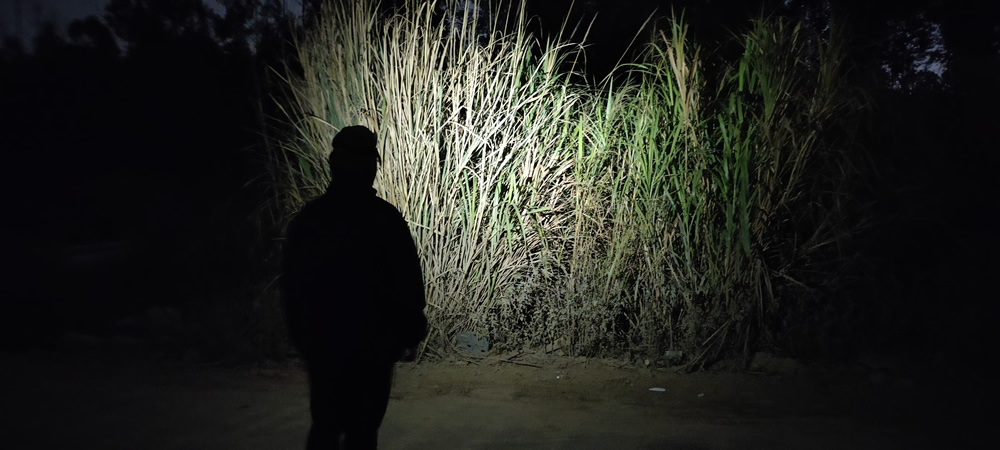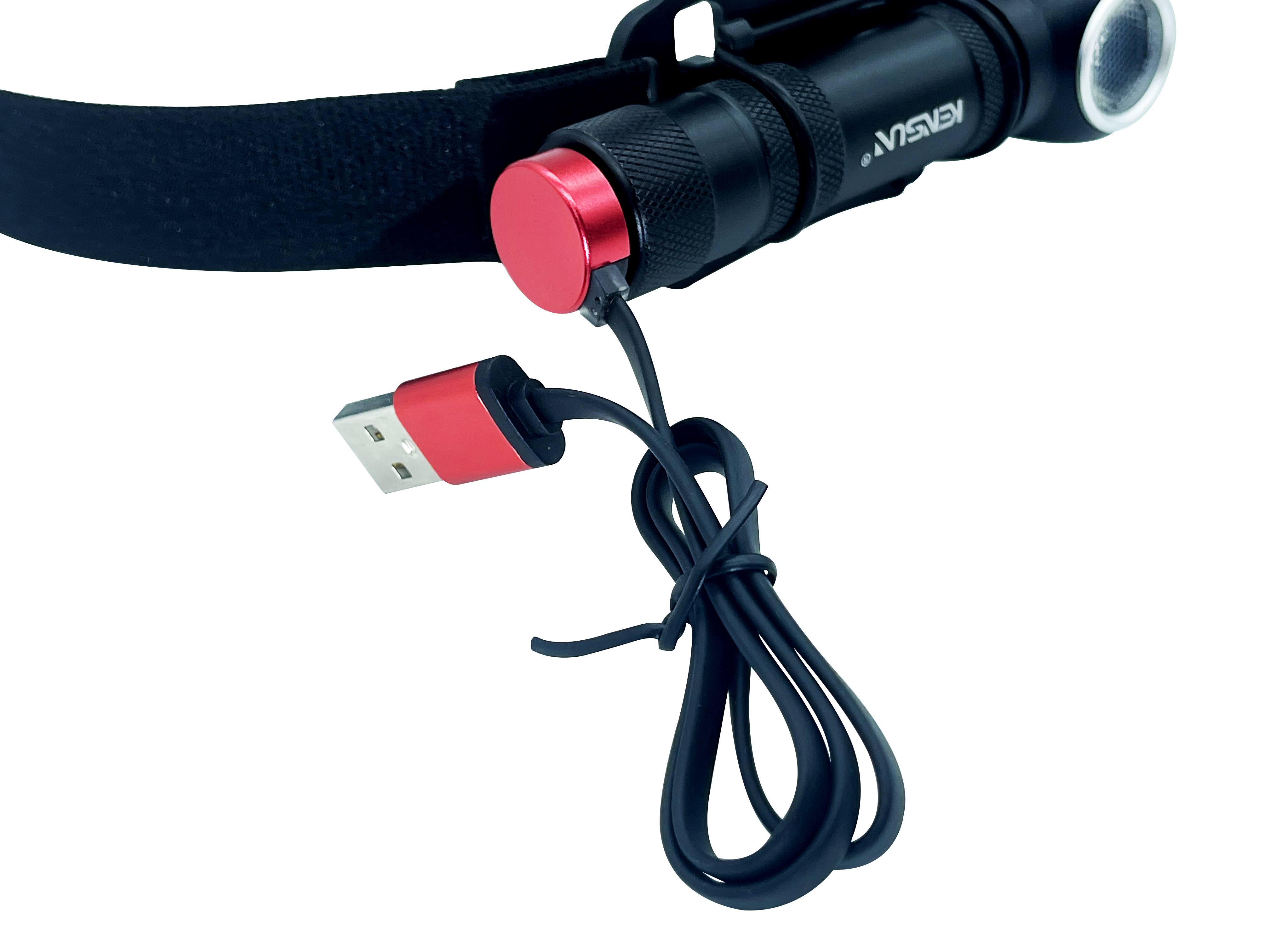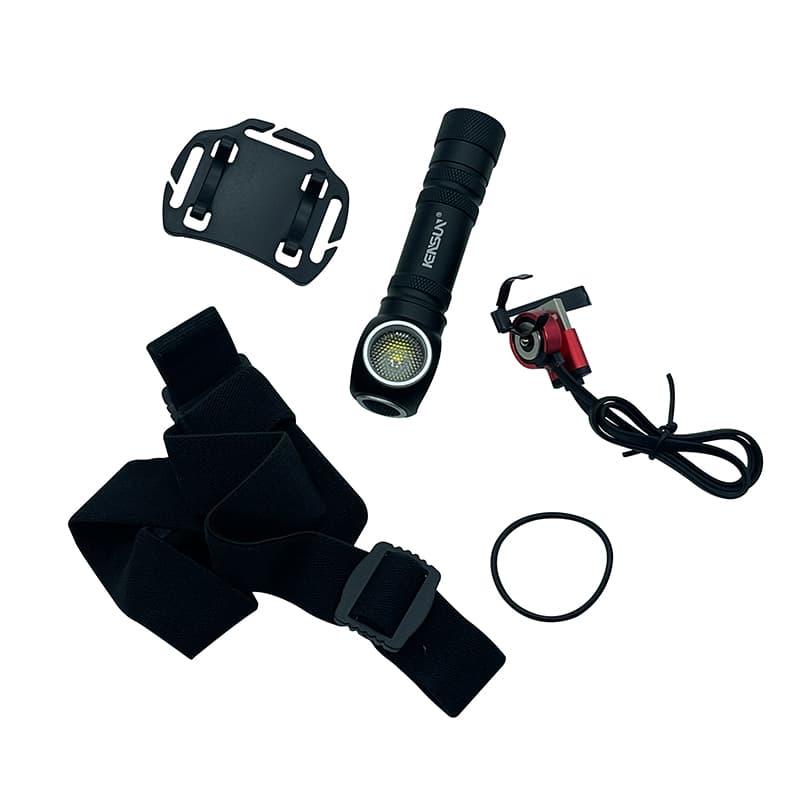Introduction
Hiking is a thrilling outdoor activity that allows individuals to explore nature and challenge themselves physically. Whether you are an experienced hiker or just starting out, having the right gear is essential for a successful and enjoyable adventure. One piece of equipment that should not be overlooked is a reliable flashlight. When hiking, especially in remote areas or during nighttime treks, a flashlight becomes an invaluable tool. It not only provides illumination but also ensures safety and security along the trail. In recent years, rechargeable flashlights have gained popularity among outdoor enthusiasts due to their numerous benefits. In this blog post, we will explore the advantages of using a rechargeable flashlight while hiking, discuss the key features to look for in a hiking flashlight, and provide tips for choosing the right rechargeable flashlight for your hiking adventures.
Using a rechargeable flashlight offers several advantages over traditional battery-powered options. Firstly, it is more cost-effective in the long run. Rechargeable flashlights can be easily recharged using various power sources such as USB ports or solar panels, eliminating the need to constantly purchase new batteries. This not only saves money but also reduces waste and environmental impact. Additionally, rechargeable flashlights tend to have longer battery life compared to disposable ones, ensuring that you won't be left in the dark during extended hikes or emergencies.
Another advantage of using a rechargeable flashlight while hiking is its reliability. These flashlights are designed with durability in mind and are often made from high-quality materials that can withstand rugged outdoor conditions. They are built to be water-resistant or even waterproof, making them suitable for use in rainy weather or near bodies of water such as rivers or lakes. Furthermore, many rechargeable flashlights come with adjustable brightness settings and beam angles, allowing you to customize the light output according to your specific needs on the trail.
When selecting a hiking flashlight, there are several key features to consider. The first feature is brightness. Look for flashlights with high lumens, as this determines the intensity of the light emitted. A higher lumen count will provide a brighter and more powerful beam, which can be useful for illuminating distant objects or navigating through dense foliage. Additionally, consider the beam distance and beam angle of the flashlight. A longer beam distance allows you to see further ahead, while a wider beam angle provides better peripheral vision.
Another important feature to look for is battery life. Opt for a rechargeable flashlight that offers long-lasting battery performance. This is particularly crucial for multi-day hikes or situations where access to charging facilities may be limited. Some flashlights even have built-in power indicators that display the remaining battery level, ensuring that you are aware of when it needs to be recharged.
Video
Advantages of Rechargeable Flashlights
Rechargeable flashlights offer several advantages that make them the ideal choice for hiking adventures. One of the key benefits is their long-lasting and sustainable nature. Unlike traditional flashlights that rely on disposable batteries, rechargeable flashlights can be used repeatedly without the need for constant battery replacements. This not only saves money in the long run but also reduces waste.
With a rechargeable flashlight, hikers can enjoy extended usage without worrying about running out of power. These flashlights are designed to provide hours of continuous illumination, making them perfect for longer hikes or camping trips. They are equipped with high-capacity batteries that can be easily recharged using a USB cable or a charging dock. This means that hikers no longer have to carry multiple sets of batteries or worry about finding replacements in remote areas.
In addition to being long-lasting, rechargeable flashlights are also cost-effective. While they may have a higher upfront cost compared to disposable battery-powered flashlights, they quickly prove to be more economical in the long term. With regular use, the cost of constantly buying new batteries adds up significantly over time. On the other hand, rechargeable flashlights only require an initial investment and can be recharged countless times without any additional expense.
Another advantage of using rechargeable flashlights for hiking is their positive impact on the environment. Disposable batteries contribute to environmental pollution due to their harmful chemicals and non-biodegradable materials. By switching to rechargeable flashlights, hikers can reduce their carbon footprint and minimize waste generation. Additionally, many rechargeable flashlight models are made from eco-friendly materials and are designed with energy-efficient features, further reducing their environmental impact.
Features to Look for in a Hiking Flashlight
When it comes to selecting a hiking flashlight, there are several key features that you should consider. These features can greatly enhance your hiking experience and ensure that you have a reliable and efficient source of light during your outdoor adventures.
1. Brightness and Beam Distance
One of the most important features to look for in a hiking flashlight is its brightness and beam distance. When you're out on the trails, especially at night or in low-light conditions, having a bright flashlight with a long beam distance can make all the difference. A high lumen output will provide you with a powerful and intense light that can illuminate your surroundings effectively. Additionally, a long beam distance will allow you to see far ahead and spot any potential hazards or obstacles on the trail.
2. Battery Life and Charging Options
Another crucial feature to consider is the battery life of the flashlight and the available charging options. Since hiking trips often last for extended periods, it's essential to have a flashlight with a long-lasting battery life. Look for flashlights that offer extended runtimes on a single charge or those that come with additional batteries for backup.
In addition to battery life, it's also important to consider the charging options available for the flashlight. Rechargeable flashlights are an excellent choice as they eliminate the need for constantly buying disposable batteries. Look for flashlights that can be charged via USB or solar power, as these options are convenient and environmentally friendly.
3. Durability and Water Resistance
Durability is another critical factor when choosing a hiking flashlight. Outdoor activities like hiking can subject your gear to rough handling, drops, and impacts. Therefore, opt for flashlights made from durable materials such as aluminum alloy or stainless steel that can withstand rugged conditions without getting damaged easily.
Water resistance is also vital when selecting a hiking flashlight since weather conditions can be unpredictable during outdoor adventures. Look for flashlights with an IPX rating indicating their water resistance level. A higher IPX rating means better protection against water splashes and rain, ensuring that your flashlight continues to function even in wet conditions.
4. Size and Weight
Considering the size and weight of a hiking flashlight is important for portability. Hikers often have limited space in their backpacks, so it's crucial to choose a flashlight that is compact and lightweight. A smaller flashlight will take up less space and be easier to carry during your hikes without adding unnecessary weight to your gear.
Tips for Choosing the Right Rechargeable Flashlight
When it comes to choosing the right rechargeable flashlight for your hiking adventures, there are several factors to consider. By assessing your hiking needs, reading reviews and comparing products, considering your budget and value for money, and testing the flashlight before heading out on a hike, you can ensure that you make an informed decision and select the perfect gear for your outdoor journeys.
1. Assess Your Hiking Needs
Before purchasing a rechargeable flashlight, it is essential to assess your specific hiking needs. Consider the type of hikes you usually undertake, such as day hikes or overnight trips. Think about the terrain you will encounter, whether it is rugged mountains or flat trails. Additionally, take into account the weather conditions you typically hike in – from sunny days to rainy or snowy environments. By evaluating these factors, you can determine what features and specifications are necessary in a rechargeable flashlight to meet your requirements.
2. Read Reviews and Compare Products
To make an informed decision when selecting a rechargeable flashlight, it is important to read reviews and compare different products. Look for reputable sources that provide detailed information about various flashlights available in the market. Pay attention to customer feedback regarding performance, durability, battery life, brightness levels, and other relevant features. By considering multiple options and understanding real-world experiences shared by others, you can narrow down your choices to find the best rechargeable flashlight for your hiking needs.
3. Consider Budget and Value for Money
While choosing a rechargeable flashlight for hiking, it is crucial to consider your budget and find a product that offers the best value for money. Determine how much you are willing to invest in a high-quality flashlight that meets your requirements without breaking the bank. Remember that price does not always correlate with quality; therefore, research thoroughly before making a purchase decision. Look for flashlights that offer a balance between affordability and performance, ensuring that you get the most value for your investment.
4. Test the Flashlight Before Hiking
Before embarking on a hiking trip, it is advisable to test the flashlight's features and functionality. This step ensures that the flashlight operates as expected and meets your specific needs. Check if the flashlight has adjustable brightness settings, different beam modes (such as flood or spotlight), and a reliable battery life. Test its durability by examining its construction materials and resistance to water or impact. Additionally, consider the weight and size of the flashlight, as it should be comfortable to carry during long hikes. By testing the flashlight beforehand, you can have peace of mind knowing that it will perform optimally during your outdoor adventures.
By following these tips for choosing the right rechargeable flashlight, you can make a well-informed decision and select a reliable tool that enhances your hiking experience. Ensure that you carefully evaluate your hiking needs, read reviews from trusted sources, consider your budget, and thoroughly test the flashlight before heading out on your next hike. With the perfect rechargeable flashlight in hand, you can confidently explore nature's wonders while staying safe and prepared in any situation.
Conclusion
In conclusion, using a rechargeable flashlight for hiking offers numerous benefits that make it an essential piece of gear for outdoor enthusiasts. Not only do these flashlights provide a reliable and long-lasting source of light, but they also contribute to environmental sustainability by reducing the need for disposable batteries. By investing in a high-quality rechargeable flashlight, hikers can enjoy the convenience of easily replenishing their power supply through various charging methods such as USB cables or solar panels.
When choosing a rechargeable flashlight for hiking, it is important to consider certain features that will enhance its functionality in outdoor settings. Look for a flashlight with adjustable brightness settings, as this will allow you to conserve battery life when needed or illuminate larger areas when necessary. Waterproof and shockproof capabilities are also crucial, as they ensure the flashlight can withstand rugged terrains and unpredictable weather conditions.
To select the right rechargeable flashlight for your hiking adventures, take into account factors such as weight and size. Opt for a compact and lightweight option that won't add unnecessary bulk to your backpack. Additionally, consider the battery life and charging time of the flashlight to ensure it meets your specific needs during extended hikes or overnight trips.
In summary, choosing the right rechargeable flashlight is essential for hikers looking to enhance their outdoor experiences. The advantages of using these flashlights extend beyond convenience and efficiency; they contribute to sustainable practices and offer reliable lighting solutions in various outdoor scenarios. By considering important features and selecting a flashlight that aligns with your specific requirements, you can ensure that your hiking adventures are well-equipped with the perfect gear. So don't forget to invest in a high-quality rechargeable flashlight before embarking on your next outdoor journey!
See Also
A Comprehensive Guide to Selecting the Perfect Color Flashlight for Outdoor Enthusiasts
Helpful Tips to Select the Perfect Camping Flashlight
Selecting the Ideal Battery for Your Flashlight
A Comprehensive Guide to Choosing the Perfect Flashlight for Home Use
Discover the Ultimate Solar Camping Lantern T040 for Campers


